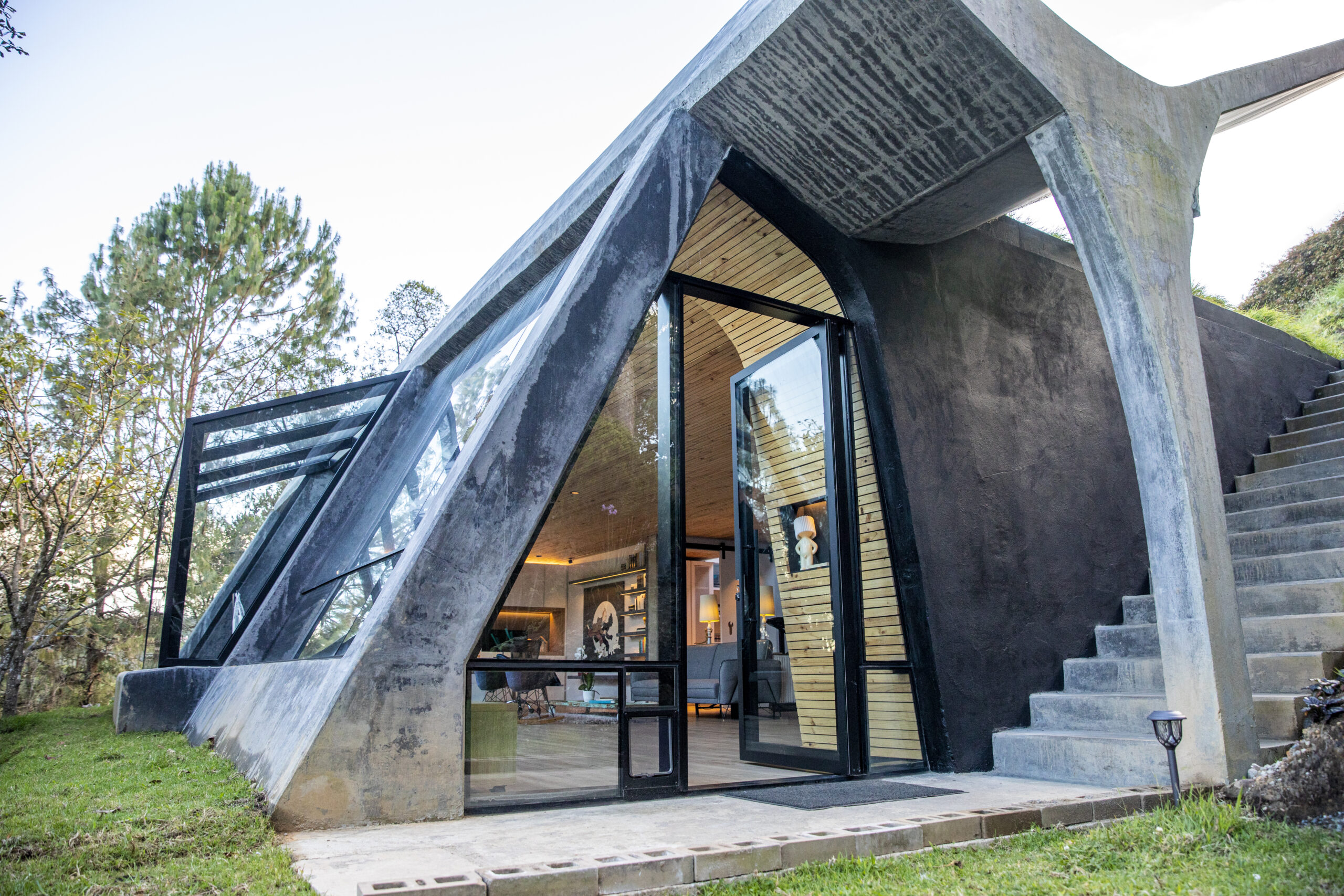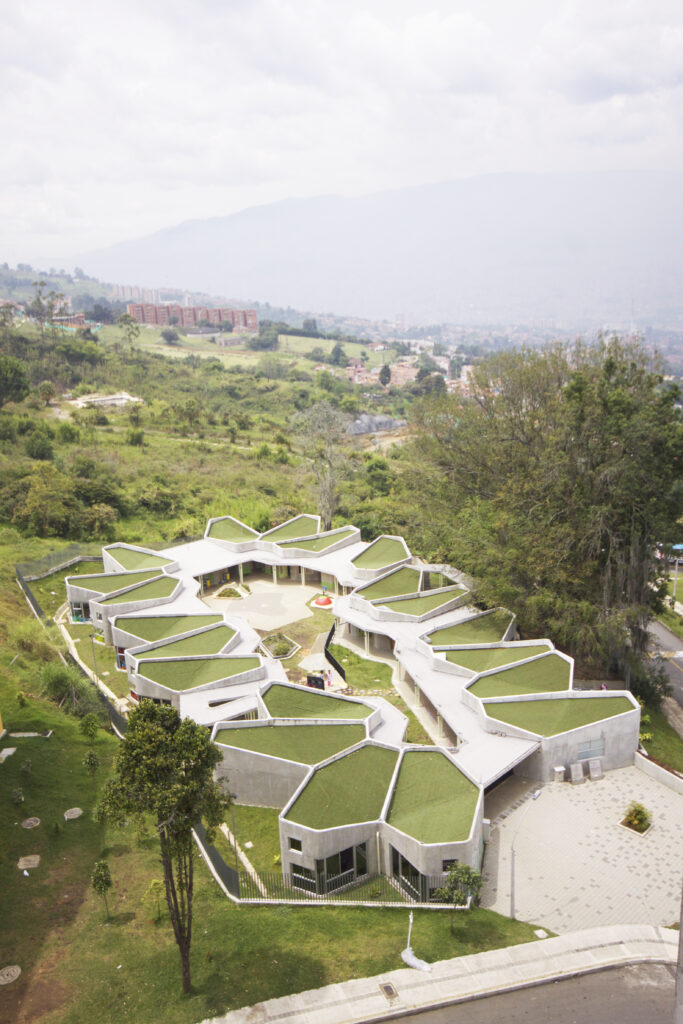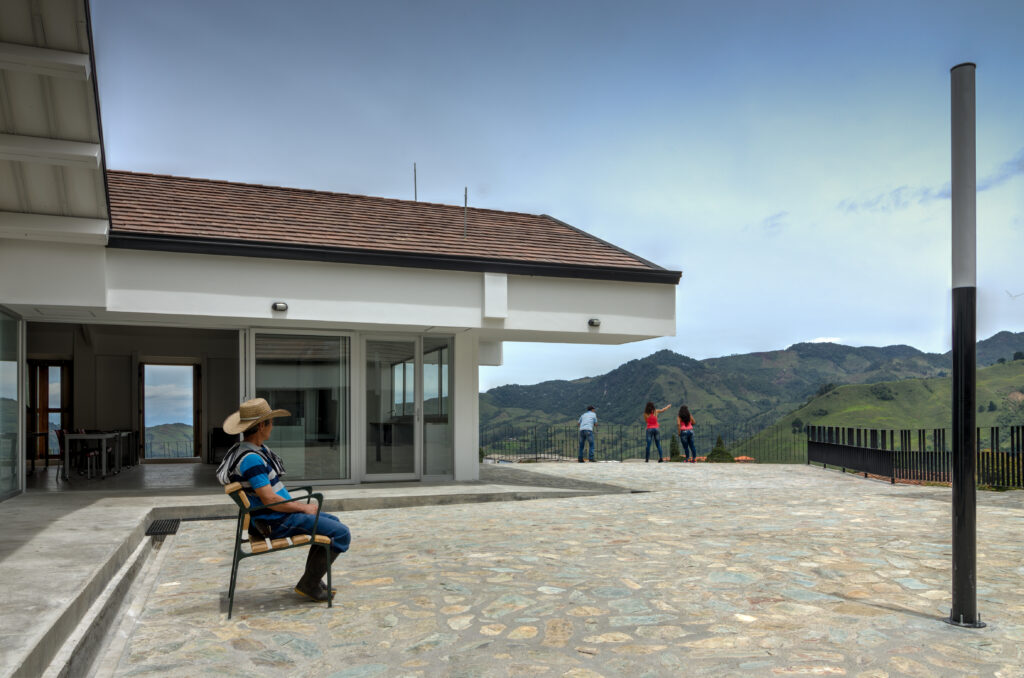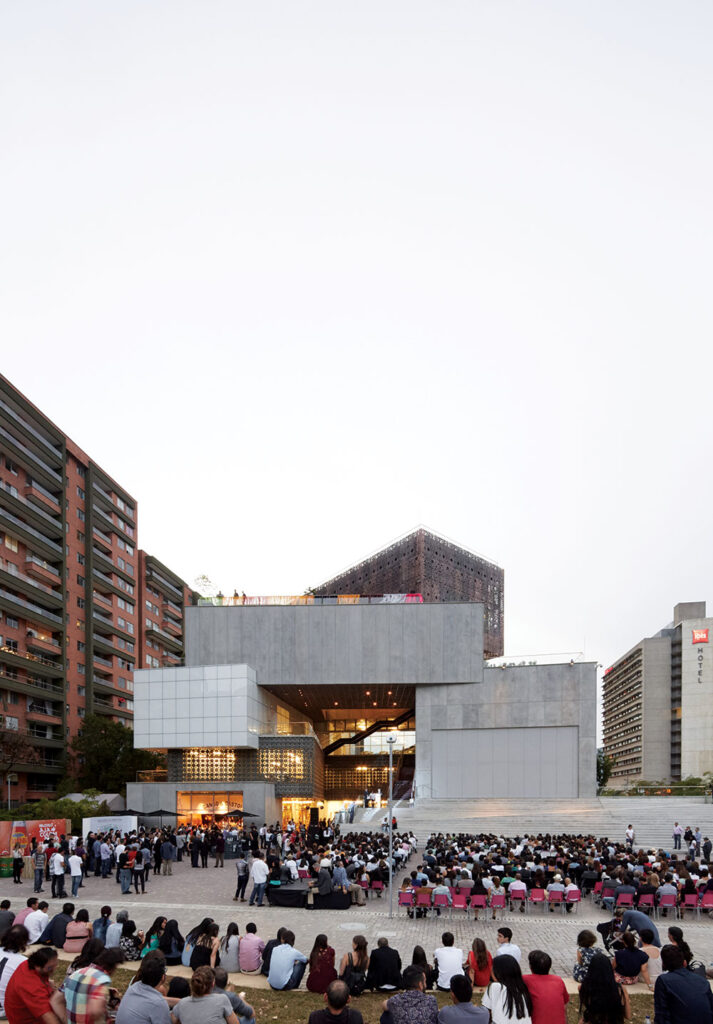
For architects and urban planners, the process of change has been of great value because, when well conceived, architecture and urban planning can act as strategic instruments to build a city and a society that are both more equitable and diverse. Here’s Viviana Peña on why the architectural response to Colombia’s divisions must be in concert with others.
Peña is a featured speaker for Design Forum: South is Up! June 3-4 at the Ballston Center at Marymount University in Arlington. Register and join her at aiava.org/design-forum-2022.
What are some of the ways Colombia is divided into two different countries?
Colombia is one of the countries with the most significant inequality in the world, and the second-highest among Latin American and Caribbean countries, after Brazil. Colombia’s Gini coefficient—a measure of income inequality—reached a value of 0.54 in 2020. According to the United Nations, a Gini coefficient greater than 0.4 is alarming to the extent that it indicates a degree of very great polarization between rich and poor, which generates a breeding ground for multiple societal and city planning problems.
This is what is happening in Colombia: there is a growing concentration of wealth and an increase in inequalities, generating a large gap between rich and poor. According to the World Bank, the income of the wealthiest 10% of Colombia’s population is eleven times greater than that of the poorest 10%. Also, just over 40% of the population lives in poverty. These are very worrying figures that reflect how inequality is one of the primary ways that generate a cultural division in Colombia — a country of both very wealthy and very impoverished people.
How do gender, ethnic, and generational inequality factor into this?
Income inequality is not the only important form of inequality in Colombia. Other forms of inequality manifest themselves between the different regions, between men and women, and between the various ethnic groups that populate the country (mestizos, whites, indigenous people and Afro-Colombians). A peasant farmer is much poorer than a city dweller, and a woman is almost twice as likely to be unemployed as a man. Likewise, indigenous people generally receive fewer years of education than other Colombians, and a Afro-Colombians are more likely to live in poor neighborhoods.
Moreover, inequalities persist between generations, making it increasingly difficult to escape poverty. Inequality is effectively transmitted from generation to generation, affecting people from their childhood and seriously conditioning their future opportunities such as access to good education, health, and employment. This way, inequality divides the country along different dimensions, creating a nation for men and another for women; a nation for white-mestizos and another for Afro-Colombians and indigenous people, etc.

What are some of the ways the architectural response to its divisions can help unify the country?
I believe the primary way architecture helps to alleviate some of these divisions is through understanding the discipline as an instrument rather than as an end in itself. Architecture alone cannot generate long-term transformations. It can only help to do so if programs, agendas, and political policies are aligned between institutions and citizens that give support and life to architectural thinking and construction.
Architecture acts as an instrument of transformation to the extent that its management, development, and construction process is well planned and understood through the participation of different political, social, and cultural institutions, the convergence of public and private policies, the inclusion of the local citizens, and the recognition of local necessities. The generation of programs, agendas, policies, and public infrastructure (housing, education, transportation, health, culture, and public space) should be aimed at the population groups from the urban and rural areas most affected by violence so that they can generate inclusion and social cohesion, reduce inequality and help to close the above-mentioned economic, territorial, gender and population gaps.

For example, the kindergartens built in the most vulnerable neighborhoods of Medellín are a series of physical spaces that act as a political instrument for the education and care of one of the most vulnerable citizens in the city and the country: the children. Through the architecture of the kindergartens, it is possible to formulate and strengthen collective, open, and inclusive spaces. The kindergartens function as an educational space for children and, at the same time, they function as a civic space for the neighborhood’s cultural activities. It also makes it possible to involve different local groups in the design and construction process and even the children’s parents can participate in their learning and teaching process. Finally, it is possible to understand that the architectural design of educational spaces is not only a matter of good classroom design but also of how playgrounds, vegetable gardens, dining rooms, and corridors contribute to the education and well-being of children through play, care, and proper nutrition.
How does this effort influence the next generation of architects?
I think these efforts offer an interesting base for urban and architectural experiments with which the new generations of architects or designers, urban planners, theorists, and critics can find formulas and resources to, on the one hand, continue working on the transformation of new neighborhoods, cities, communities and unattended territories of the country; and on the other hand, continue generating ideas in order to face the current difficulties presented by the non-implementation of the peace agreements or the effects of the pandemic and climate change.

What unites your approaches to residential work for private clients and other kinds of work for civic and communal clients?
One of the approaches I share in private and public commissions is using and exploring ornament. I understand ornament as a resource and instrument of architecture under which cultural, social, and political change processes are facilitated. Through ornament, it is possible to generate changes and facilitate transformations by incorporating new materials, adapting these to new organizational approaches, hybridizing new technologies with traditional crafts, and linking groups, languages and even cultural practices of the local reality.
The design exploration of the ornament allows producing changes in the categories of the elements, materials, and techniques used in such a way that helps to alter their default function, expanding their operational limits and adding variations to the system. I am interested in the changes in the default functions of the elements of architecture or architecture itself because, through them, it is possible to generate new cultural meanings. These interests often converge in the private residential and public cultural projects I have designed.
To give an example, beyond performing their default function, stairs and ramps I designed during the Expansion of the Museum of Modern Art in Medellin also act as a place to expand cultural content and to support public life and citizen encounters. The windows of the Casa Visor Telescopioare designed to be used not only for ventilation and illumination but as places of exchange of the domestic human activities of the interior with the -non-human- life of the exterior. The support systems of a dwelling in the countryside are thought and built through the reflection and adaptation of traditional construction systems, such as houses on stilts, which generates the coexistence of human and animal life forms, the land, the bodies of water, and the forests.
Similarly, the metal and concrete lattices of the museum are designed and produced through the reflection of the aesthetic, material, and handcrafted culture and its instrumentalization in new technological processes, mixing craftsmanship, mechanization, and digitalization, allowing the incorporation of new design languages and local techniques become a reality. It allows us to transform the image of the city’s institutions and bring them closer to the local citizens, building spaces for collective identity and new forms of coexistence.

Medellín has become an international focus in the last decade for its density, urban patterns, and transportation. What does that attention mean for the city?
During the first two decades of this century, Medellín has managed to materialize and build a process of social, cultural, and political transformation, which is of special value given the period of crisis and violence that the city experienced at the end of the 20th century.
In the 1980s and 1990s, Medellín experienced a period of extreme violence due to drug trafficking, the internal armed conflict, and the so-called “war on drugs,” funded in part by the government of the US. These three facts were fed by extreme inequality, illegality, and corruption, which, added to the weakness of Colombian public institutions, population growth, and the intensification of violence, triggered a period of extreme instability in the city. In the 1990s, Medellín had the highest homicide rates in the world.
However, throughout the first and second decades of the 21st century, Medellín began to make its transformation visible. Architect and urban planner Jorge Pérez Jaramillo, in his book Medellín: Urbanismo y Sociedad, points out how the city, even in the middle of its crisis, found a way to reinvent its public institutions. Periods of reflection and critical thinking combined to initiate the radical transformations in both citizens and local institutions that would allow the “most dangerous city in the world” to reinvent itself.
For us, architects and urban planners, this process of change has been of great value because, when well conceived, architecture and urban planning can act as strategic instruments to build a city and a society that are both more equitable and diverse.
Three consecutive municipal governments [Sergio Fajardo 2004-2007, Alonso Salazar 2008-2011, and Aníbal Gaviria 2012-2015] worked together on the same city project to build new public transport systems such as Metro Cables, escalators on the slopes, urban strategies in the most vulnerable neighborhoods—Proyectos Urbanos Integrales (PUIs) libraries, schools, kindergartens, sports centers and facilities, extensions of museums such as the Museo de Antioquia and Museo de Arte Moderno de Medellín, and new public spaces and facilities around water, like Unidades de Vida Articulada (UVAs) and the Parques del Río along the Medellín River. These projects were managed by the city’s public institutions in alliance with private institutions, academics, and democratic organizations. These initiatives show visible signs of a structural transformation in the city. As a result, it has been possible to strengthen, improve and consolidate programs, agendas, and collective spaces that have promoted education, sports, social inclusion, culture, and art. Finally, these initiatives have encouraged the public life that had been brutally oppressed for the previous two decades, to flourish again.
Some of these architectural projects and political programs have been recognized by international institutions, thus putting Medellín in the international spotlight for the construction of change in a relatively short time. The new international focus represents the construction of a transformational path through political, cultural, and democratic development, all working together. In global terms, this transformational path inspires reflections on the crisis of violence, immigration, and inequality that the cities of the 21st century are facing. In local terms, this path underlines the importance of the strengthening and convergence of public, private, academic, and democratic institutions for the construction and renovation of a city. It is a process that has begun and that must be continued taking in consideration the current realities faced by the city and the country, together with the latest local and global environmental crises.
This interview has been edited for length and clarity.
William Richards is a writer based in Washington, DC, and co-founder of Team Three, an editorial and creative consultancy. His latest book, Bamboo Contemporary, published by Princeton Architectural Press, is out this month.
